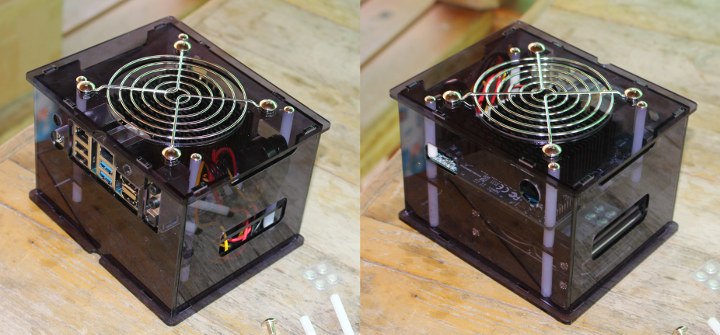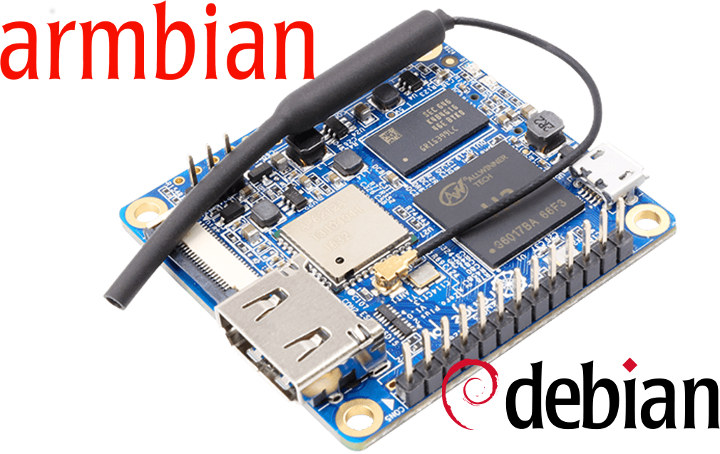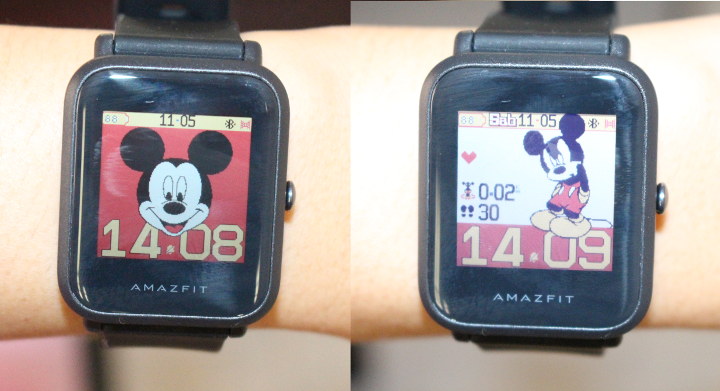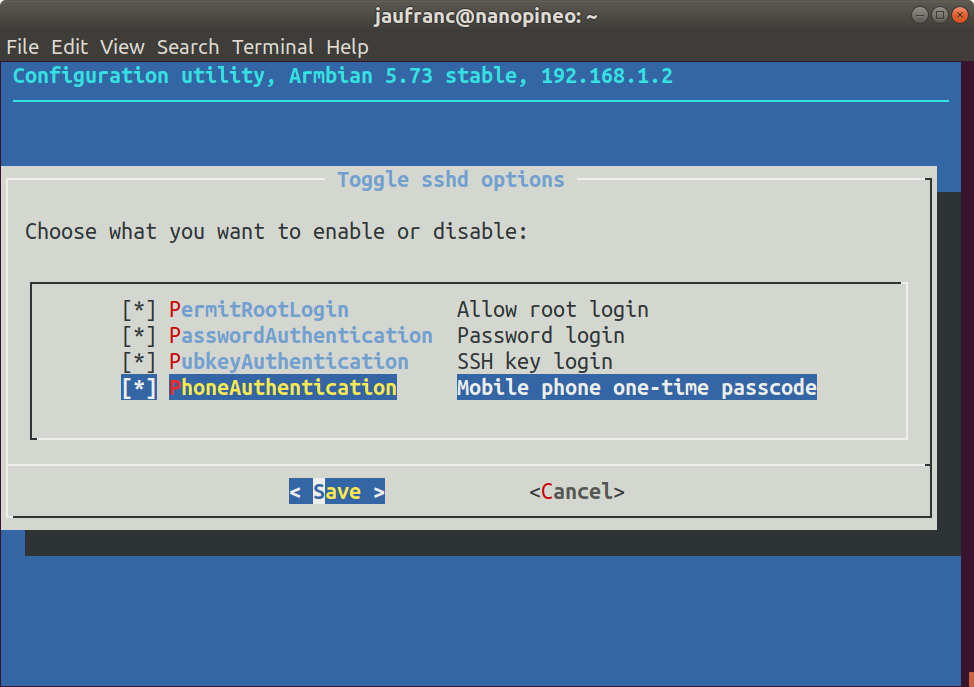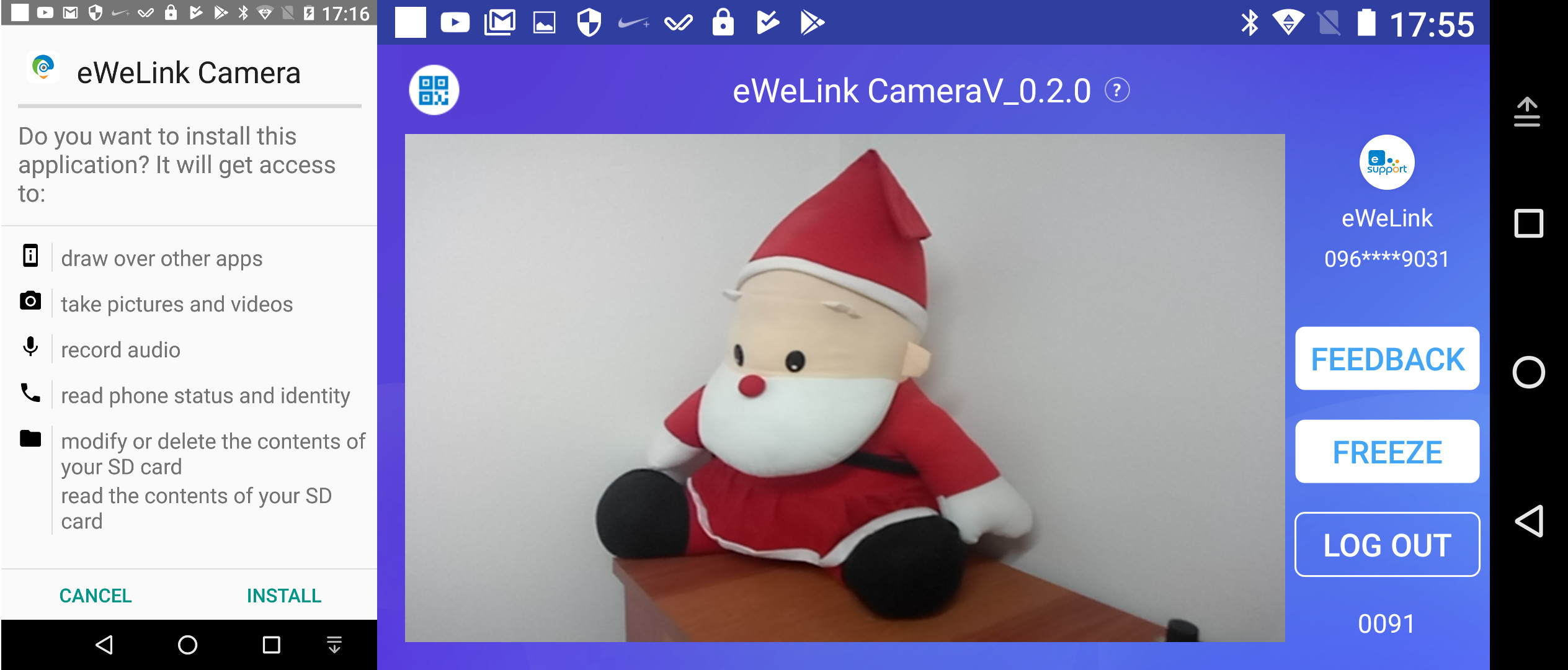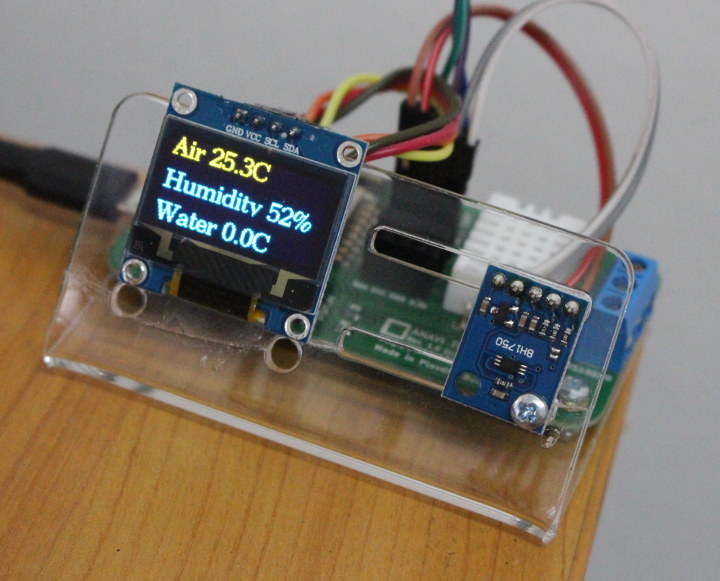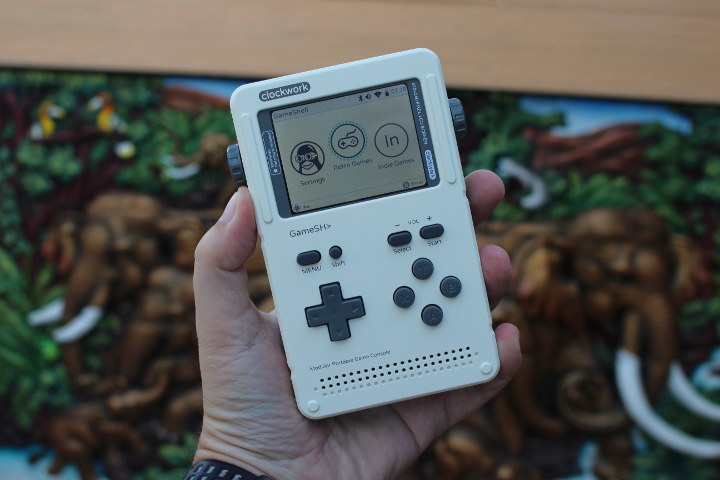ODROID-H2 was announced in October 2018 as the first x86 SBC from Hardkernel. The board features an Intel Celeron J4105 Gemini Lake processor, two SO-DIMM slots for memory, two SATA ports and M.2 NVMe slot for storage, two Gigabit Ethernet ports, a mix of USB 3.0 and 2.0 ports, as well as HDMI and DisplayPort video outputs. The board went for sale the following month for $111, and the first batch of 2,000 boards was sold within 24 hours. In normal cases, this should not be a big problem, and in a few weeks, the company should have been able to produce more boards to fulfill the demand. But Intel decided to prioritize higher-end processors, and Gemini Lake SoCs’ manufacturing was put on the back foot. That means Hardkernel had to wait over 6 months to get supply of the Celeron J4150 processors. In the meantime, the company slightly redesign […]
Create Minimal Debian Upstream Images with Debos and Armbian
[Update June 28: Post updated with correct procedure thanks to Collabora help] Armbian provides lightweight Debian or Ubuntu images for various Arm Linux SBC, and over the years has become the recommended source for stable firmware images for boards part of Orange Pi & Banana Pi families, and others. Uncompressed images are still over 1GB and come with Armbian-specific tools, kernel and bootloader. If you’d like to leverage Armbian images, but instead create a Debian upstream image with only the packages you intend to use, Collabora explains how to do just that with Orange Pi Zero +2 H5 and Libre Computer AML-S905X-CC (aka Le Potato) boards using Debos Debian OS builder. I’ve decided to give a try at the instructions for Orange Pi Zero Plus2 H5 in my laptop running Ubuntu 18.04 to better understand how this all works. I’ll assume you’ve already installed Docker, and made sure you’ve got […]
Customize Amazfit Bip Smartwatch – Thai Language and Mickey Mouse
I’ve been wearing WeLoop Hey 3S smartwatch for well over a year now, and I’m still very satisfied with it, but a small problem is that it does not support the Thai language, so when I receive messages it’s just blank, or only shows the ASCII characters part of the string. There’s also no real community for this watch, so customization options are limited, and readers recommended Amazfit Bip instead. I’ve writing about this, because one person I know looked for a smartwatch, and first wanted to get an Apple Smartwatch, but where I live it’s over one month of the minimum salary and around two to three weeks of a typical office salary. So instead I recommended the much cheaper Amazfit Bip after I was told the requirements were support for Thai language notifications, and custom watch faces in order to install a Mickey Mouse watch face, and both […]
Enabling Two-Factor Authentication for SSH Access in Armbian
Until today, I only knew of two authentication methods for SSH: the traditional username/password and key-based login with private/public keys with the latter being more secure and not requiring any password. But I’ve just found out it’s also possible to login to SSH using two-factor authentication relying on your smartphone to get an OTP code like you would to access some banking services as it can easily be enabled in Armbian. First you’ll want to enable key-based login with private/public keys, or you won’t be able to access your board anymore after enabling 2FA except via the serial console. Now simply start armbian-config, and go to System Settings->Reconfigure SSH daemon to enable PhoneAuthentication “mobile phone one-time passcode”. We’re not done yet, so don’t close Armbian-config You’d then need an Android or iOS phone running Google Authenticator app to receive the OTP (one-time password). After enabling PhoneAuthenticator in armbian-config, you’ll see […]
eWelink Camera App Recycles Your Old Smartphone into a Remote Camera
Old devices often end up in drawers or shelves collecting dust, but as we’ve seen before there are better ways to recycle your unused gadgets, from giving it to friends or family to selling them on eBay, or re-purposing them for specific purpose. For example, we’ve previously covered Haven open source app that transforms smartphones into smart security cameras or baby monitors. eWelink, the default app used with Sonoff wireless switches, smart plugs and light-bulbs, now happens to support a similar feature. So if you’re using the stock firmware on your Sonoff device and control them with the Sonoff app, you don’t need an extra app to use your old smartphone(s) as IP camera(s). It looked easy enough to setup, so I gave it a try. First you need to download & install eWelink Camera app, only available as an apk at this time, in your old phone. Once the […]
Getting Started with Temperature & Humidity Sensors on ESP8266 using ANAVI Thermometer
ANAVI Thermometer was launched on CrowdSupply in January. It is an ESP8266 WiFi board with a built-in DHT22 temperature and humidity sensor, support for external DS18B20 waterproof temperature sensor, as well as other sensors thanks to three I2C sensors. I received the ANAVI Thermometer starter kit last month, and I’ve only found time to play with it in the last few days. I’ll start with a unboxing, assembly guide, before showing it action, and I’ll try to make it interface with Home Assistant over MQTT. ANAVI Thermometer Starter Kit Unboxing The kit comes with ANAVI Thermometer board, a plastic stand, a USB to TTL debug board, an I2C OLED display, a few nuts and bolts, and a couple of KiCad and ANAVI stickers. Leon ANAVI also added a traffic light board and LEDs, but it’s not normally part of the kit 🙂 ANAVI Thermometer board include an ESP8266 module, AM2302 […]
How to Import Google+ Account and Communities to MeWe
Google+ for consumers is going to definitely shutdown on April 2nd, and as written previously I had been looking for an alternative, and ended-up going with MeWe Ad-free, Privacy Focused Social Network. I created my own account, as well as two groups for development boards & SBCs and mini PCs & TV boxes. Many users have joined MeWe because of Google+ upcoming closure, so it made sense for the company to create an importer so that all posts, and communities can be imported from Google+ into MeWe. Mark Weinstein, MeWe CEO & founder, has now announced the release of Google+ Importer and instructions in a PDF sadly written in Microsoft Word… The steps are fairly simple: Go to https://takeout.google.com and click on “Deselect All” Select Google+ Circles, Google+ Communities, and Google+ Stream (apparently Google+ Likes is not needed), and make sure to check the format to JSON whenever possible as […]
ClockworkPi GameShell Review – Part 1: Unboxing & Assembly Guide
ClockworkPi Gameshell is a portable retro gaming console kit designed to be hackable being powered by Allwinner R16 processor to run Linux, as well as an Arduino compatible Atmel AVR MCU. It’s partially open source hardware with PDF schematics, and firmware source code available on Github. The device launched last year on Kickstarter, raised close to $300,000, and started shipping to backers last summer. The company has now sent me a sample for review, so let’s have a look. The first part of the review will be more than just an unboxing, since the game console is meant to be assembled by the end user, and I’ll report my experience doing so. ClockworkPi Gameshell Unboxing The kit comes in a fairly large package that reads “GameShell – Redefine Portable Game Console” and lists the main specifications with quad core Cortex A7 processor, WiFi and Bluetooth connectivity, 1GB RAM, 16GB micro […]


